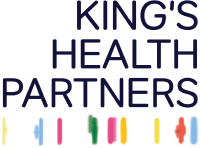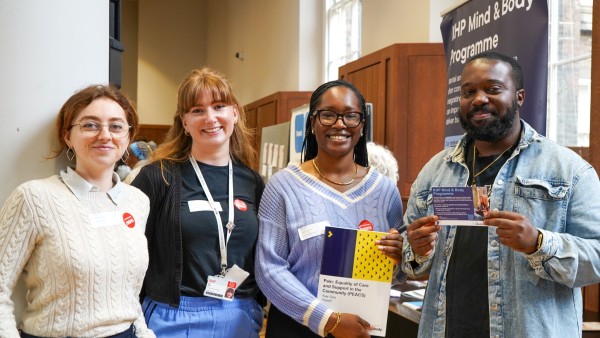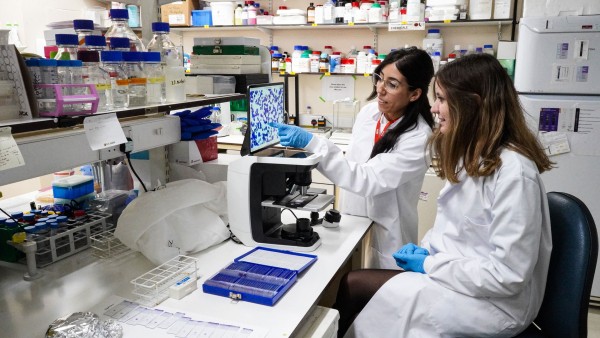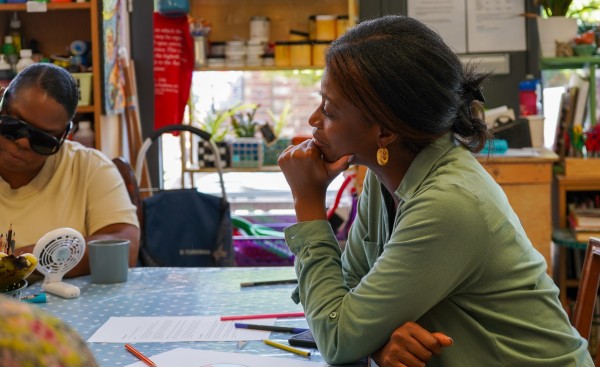14 February 2024
The KHP Mind & Body programme Pain: Equality of Care and Support within the community (PEACS) project has been developed for people living with chronic pain in the borough of Lambeth, and was piloted in the Stockwell Primary Care Network.
People from Black communities often experience a prevalence of chronic pain, and lower rates of access to care and poorer clinical outcomes in comparison to white patients. The pathway was designed to minimise the impact of structural bias and inequalities in the foundation of the service.
Below one of the PEACS project's GPs, Dr Feyisara Mendes [pictured], shares her experiences of working in General Practice, as well as her time with the PEACS project.
Could you tell us a little about your background as a GP?
I’ve worked in General Practice for more than five years and have a specialist interest in lifestyle medicine. I currently work as a portfolio GP doing three NHS clinical sessions a week. The rest of my time is spent involved in various quality improvement projects across London primary care networks. These projects have a shared objective which is improving population health and reducing health inequalities.
What is your role in the PEACS project?
As a PEACS GP my role was to support the delivery of the pathway. This includes initial assessments, which aim to be a comprehensive, holistic assessment of an individual’s chronic pain history. It is an opportunity for patients to tell their story, share the challenges they’ve experienced and discuss their needs in depth. A typical NHS GP appointment lasts 10 minutes, so the opportunity to offer 30-minute assessments with a clinician was valuable.
The other part of my role involved delivering various workshops focused on the pillars of lifestyle medicine, discussing how incremental lifestyle changes can contribute towards better chronic pain self-management. I also contribute to regular learning reviews and steering group meetings. Being able to directly share feedback from service users and help shape improvements in the pathway during different phases of the project has been valuable.
What are you most proud of when it comes to your work on the project?
The co-design work and how it has shaped the pathway from the outset. We frequently see investment in projects with well-intentioned aims, but they struggle to meet the needs of the population they are trying to serve. Starting with the voice and perspective of the black community in Lambeth has been a major contributing factor to the success of this project.
The feedback from service users has been incredibly positive and reinforces just how crucial this approach is. The impact on the community is visible. One of the key findings from year one was that participants developed authentic relationships with their peers, creating a local peer support network that now exists beyond the PEACS pathway.
If there was one thing you could change about the PEACS project, what would it be and why?
A limitless budget! We’ve seen that our service users really value the resources and support available from community and voluntary services. These services are integral for reducing health inequalities and addressing the wide-ranging health and social care needs of local communities. These services help to reduce social isolation, increase physical activity, and develop new skills that can build a sense of purpose and meaning. Unfortunately, they are chronically underfunded, and this impacts sustainability.
What are your hopes for the project in the future?
There’s a feeling of excitement within the team as we enter the second year of the pilot. We are hopeful that the learning from year one has enabled us to sustain the aspects of the pathway that work well whilst making improvements where needed. By the end of year two, we hope our model can be replicated at scale. I sincerely hope that local commissioners recognise that value that PEACS can offer and commit to embedding the pathway more widely within the health system.
Partnership and support at integrated care system level integral to achieving this, with local partners best placed to help navigate challenges such as sustainable collaboration with the voluntary and community sector. I also hope that this model; utilising group consultations, a lifestyle medicine approach, community partnership and co-design, can be adopted to support the management of other long-term health conditions.
______
KHP visited a PEACS workshop at Art4Space in Stockwell last year and spoke to Dr Mendes and service users. Watch the video here:
https://
Find out more about the PEACS project here.





